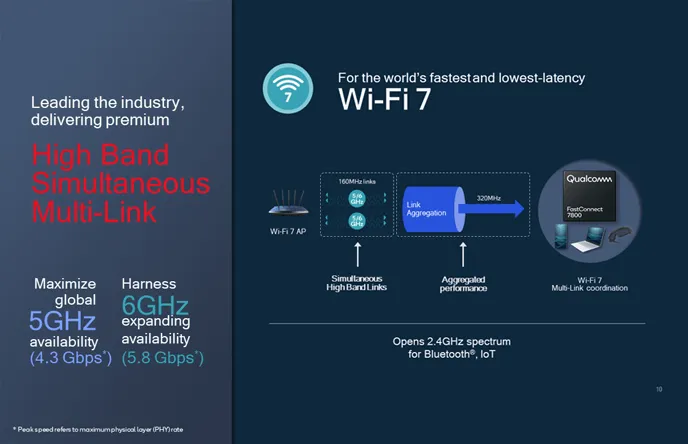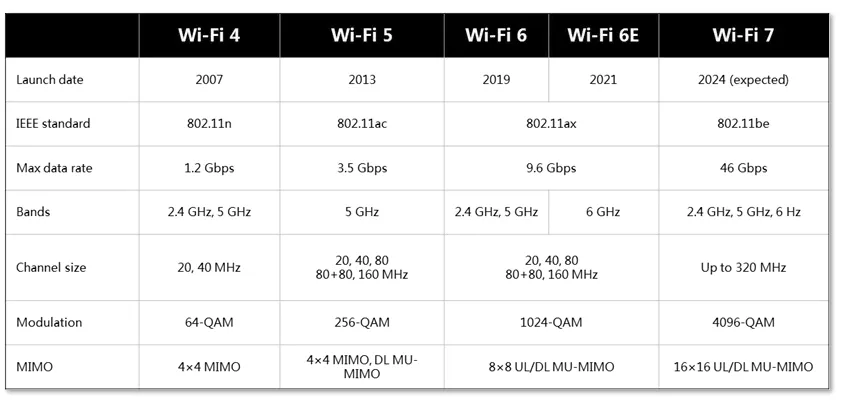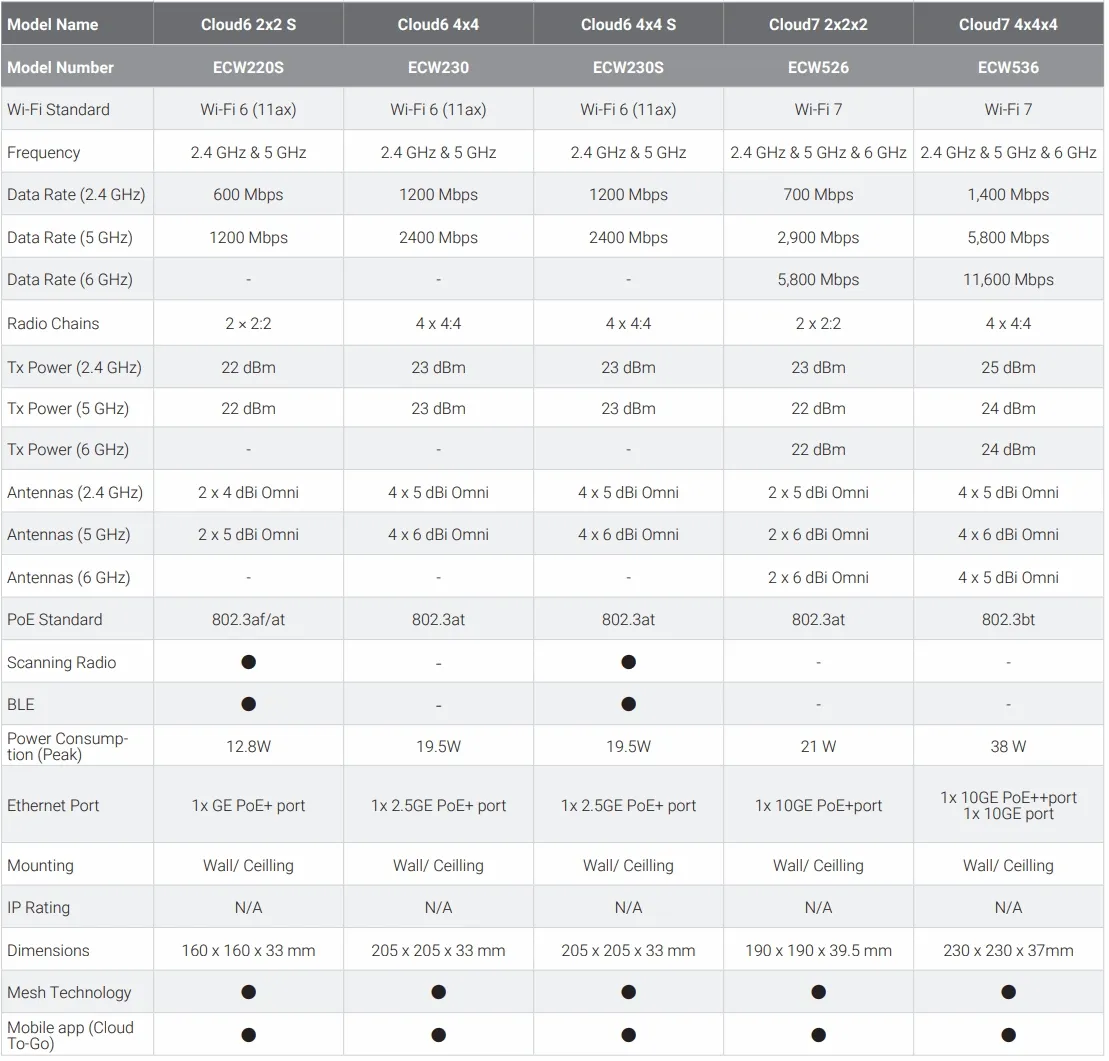Bits, Frames, and Packets
Why an access point? Here's the thing, in my house, we have weird LAN on all floors. However, not all devices can make use of LAN. The move towards WiFi 6E/7 and especially the 5/6 GHz bands (AC/AX) in my home and workplace resulted in enhanced performance in terms of transfer speeds, as well as better handling of a large number of devices on the network. There is. However, one drawback is less range, especially when going through walls which can lead to wireless signal issues in a few areas in the house at the farthest points and, for some, the garage. Here's where an Access point comes into play. The AP has several mission-critical security features, such as intrusion detection and mediation technologies. As stated and apparent, it features WiFi 7, which can connect to many devices. It's also simple to set up and install because free cloud management software is available. These are only a few of the issues we'll have to consider.
Right, let's go a little deeper. Wi-Fi 7 offers significant improvements over its predecessors in three key areas:
Enhanced Channel Bandwidths: The bandwidth capacity has doubled from 160MHz in previous generations to 320MHz. This increase allows for higher data throughput, effectively doubling the theoretical speed. This enhancement is beneficial for reducing interference from neighboring networks. However, it's important to note that while wider channels can theoretically simplify network setup, practical limitations exist. For instance, in Europe, the entire 6GHz band can accommodate either three 160MHz channels or a single 320MHz channel. Consequently, while broader channels are theoretically advantageous, real-world constraints may limit their utility.
Advanced QAM Constellations: The jump from 1024 to 4096 points in QAM (Quadrature Amplitude Modulation) constellations marks a significant upgrade. QAM is a modulation technique used in wireless technology, and higher points in the constellation represent more complex encoding of data. However, for typical Wi-Fi usage, the benefits of a larger QAM constellation may not be fully realized. Higher QAM levels, like QAM-4096, can be too susceptible to noise, limiting their practicality in everyday scenarios. They might be more applicable in specific use cases, such as streaming to a VR headset within a short, direct line-of-sight range to the access point.
Increased MIMO Channels: The shift from 8x8 to 16x16 MIMO (Multiple Input Multiple Output) channels represents a significant advancement in potential data paths and speeds. More MIMO channels theoretically enhance network capacity and efficiency. However, most consumer devices, such as phones and laptops, don't have the hardware to support 16 antennas, which limits the practical application of this feature in everyday use.
Wi-Fi 5 was the 5th generation of Wi-Fi technology, also known as 802.11ac. It is a wireless networking standard that offers faster speeds and greater capacity than its predecessor, Wi-Fi 4 (802.11n). Wi-Fi 5 operates on the 5GHz frequency band and can reach speeds of up to 1.3 Gbps. It also has improved support for multiple devices, making it more suitable for use in crowded environments such as airports or coffee shops. Wi-Fi 5 devices are backwards compatible with previous Wi-Fi generations, so they can still connect to older networks.
Wi-Fi 6 is the 6th generation of wireless technology, also known as 802.11ax. It is designed to improve upon the previous generation (WiFi 5 or 802.11ac) by offering faster speeds, lower latency, and increased capacity. This means that WiFi 6-enabled devices will be able to handle more data at once, resulting in faster streaming, downloading, and browsing. Additionally, WiFi 6 will be better equipped to handle large numbers of connected devices, making it ideal for crowded environments like airports and stadiums.
Wi-Fi 6E is an extension of the Wi-Fi 6 standard or 802.11ax that is now supported on most motherboards also. The E stands for Extended, and the main feat of the expansion is the addition of support for the 6GHz band, which runs from 5925MHz to 7125MHz. Compatibility with older Wi-Fi standards will remain, and Wi-Fi 6E will thus have three bands: 2.4GHz, 5GHz, and 6GHz. Below the AX 2.4 and 5 GHz, single-link connection.
Wi-Fi 7 known as IEEE 802.11be Extremely High Throughput (EHT), represents the upcoming WiFi standard. It operates seamlessly across all three frequency bands, including 2.4 GHz, 5 GHz, and 6 GHz, to maximize the utilization of spectrum resources. While WiFi 6 was developed in response to the increasing number of devices worldwide, the primary objective of WiFi 7 is to deliver remarkable speeds while ensuring greater efficiency for every connected device. WiFi 7 introduces several key features, including a 320 MHz ultra-wide bandwidth, 4096-QAM, Multi-RU, and Multi-Link Operation, all of which combine to provide speeds that are 4.8 times faster than WiFi 6 and up to 10 times faster than WiFi 5. This advancement unlocks a multitude of new possibilities and applications, making it a game-changer in the realm of wireless connectivity.
| WiFi 5 | WiFi 6 | WiFi 6E | WiFi 7 | |
|---|---|---|---|---|
| IEEE Standard | 802.11ac | 802.11ax | 802.11be | |
| Max Data Rate | 3.5 Gbps | 9.6 Gbps | 46 Gbps | |
| Bands | 5GHz | 5GHz 2.4GHz | 6GHz 5GHz 2.4GHz | 6GHz 5GHz 2.4GHz |
| Channel Size | Up To 160MHz | Up To 320MHz | ||
| Modulation | 256-QAM | 1024-QAM | 4096-QAM | |
| MIMO | 4X4 MIMO, DL MU-MIMO | 8x8 UL/DL MU-MIMO | 16x16 UL/DL MU-MIMO | |
Understanding Multi-Link Operation (MLO) in Wi-Fi 7: Enhanced Throughput and Reduced Latency
Wi-Fi 7 introduces Multi-Link Operation (MLO), a significant advancement in wireless communication technology. MLO enables devices to simultaneously transmit data across multiple frequency channels, including 2.4GHz, 5GHz, and 6GHz. This simultaneous usage facilitates the creation of an aggregated data pipeline, leading to a substantial increase in throughput and a decrease in latency. Unlike previous technologies, MLO in Wi-Fi 7 offers enhanced flexibility and efficiency in channel usage, particularly between the 5GHz and 6GHz spectrums. This improvement stems from the closer frequency range of 5GHz and 6GHz compared to the broader gap between 2.4GHz and 5GHz. The proximity of 5GHz and 6GHz channels allows for quicker operation without the delays previously experienced with the 2.4GHz spectrum. Wi-Fi 7's expansion into the 6GHz frequency band, as detailed in the AFC (Automated Frequency Coordination) section, plays a crucial role. This expansion allows for the distribution of large data volumes into numerous packets, which are then transmitted over high-bandwidth frequencies. This capability is particularly beneficial in environments with high traffic and numerous connected devices, as the higher frequency channels of 5GHz and 6GHz are competent at managing data transmission and reception under such conditions.
The Windows 11 24H2 update for Windows PCs support Wi-Fi 7 Multi-Link Operation (MLO), a significant enhancement in wireless networking technology. MLO enables simultaneous connections between a client and a router across multiple radio frequencies, specifically 2.4, 5, and 6 GHz bands. This dual-band or tri-band connectivity not only boosts data transmission speeds but also significantly enhances the reliability and stability of the wireless connection. MLO functions similarly to link aggregation but within the context of wireless local area networks (WLAN). It amalgamates multiple frequency bands to create a more robust and efficient communication channel. As Windows 11 evolves to fully integrate Wi-Fi 7 capabilities, these benefits are expected to become even more pronounced, potentially leading to further increases in wireless networking speed.
Wi-Fi 7 Enhances Data Transmission with 4K Quadrature Amplitude Modulation
Quadrature Amplitude Modulation (QAM) technology, a method for transmitting multiple data packets by combining signals of various amplitudes and phases, has been a feature of previous Wi-Fi standards. The advancement of this technology is evident in Wi-Fi 7, which introduces 4K QAM, capable of superimposing 4096 signals concurrently. In comparison, Wi-Fi 6's technology was limited to 1024 QAM. The implementation of 4K QAM in Wi-Fi 7 marks a significant enhancement in data transmission capabilities. It is expected to increase the network capacity of Wi-Fi 7, reduce latency in data transmission, and enhance the overall efficiency of the network. This development represents a key evolution in wireless communication technology, offering more strong and efficient data handling capabilities.
Automated Frequency Coordination (AFC) in Wi-Fi 7 for Enhanced 6GHz Channel Utilization
With the introduction of Wi-Fi 6E in 2020, a significant challenge emerged in preventing interference within the 6GHz frequency band. This interference issue has limited the full exploitation of the 6GHz channel's potential in wireless technology. Similar regulatory constraints are evident in other global regions as well. To address this challenge, Wi-Fi 7 incorporates Automated Frequency Coordination (AFC), a technological solution designed to mitigate interference issues. AFC functions by gathering data on antenna patterns and the origins of signal transmissions. This data is then used to form a cloud-based database. AFC employs complex algorithms to identify and avoid interference in specific areas. In regions where interference is not detected, AFC enables Wi-Fi 7 devices to broadcast at substantially higher power levels on the 6GHz channel. Quantitatively, in the absence of interference, Wi-Fi 7 is capable of operating at power levels up to 63 times greater than current standards. This significant enhancement in power capability, facilitated by AFC, is expected to expand the use and availability of 6GHz channels in Wi-Fi 7, leading to broader adoption and improved performance in wireless communications.
Hardware EnGenius ECW536
The AP is powered by a quad-core Qualcomm IPQ8072A (4x ARM Cortex A53) processor - yes, the EnGenius ECW336 is built on the Qualcomm Networking Pro 1210 platform. There is the Samsung SEC216 K4A8G16 1GB RAM, the Winbond W29N02GZBIBA 256MB NAND flash memory, the Marvell AQrate AQR114C GEN4 PHY for the 5GbE port, the Qualcomm PMP8074 power management FBGA, and the MT774 1CK G4 LED driver.
The EnGenius ECW536 is a quad-band access point, with 11a/b/g/n/ac/ax/be 4:4:4 chip + 4x Qorvo QPF4528 integrated front-end modules for the 5GHz band and the Qualcomm QCN9024 802.11ax chip with 4x CSHY front-end modules for the 6GHz band.
- IEEE 802.11be on 2.4 GHz
IEEE 802.11be on 5 GHz
IEEE 802.11be on 6 GHz
Backward compatible with 802.11a/b/g/n/ac/ax - 4 x 2.4 GHz: 5 dBi(Integrated Omni-Directional) 4 x 5 GHz: 6 dBi(Integrated Omni-Directional) 4 x 6 GHz: 5 dBi(Integrated Omni-Directional)
- 1 x 10GE Port (PoE++) 1 x 10GE Port 1 x DC Jack 1 x Reset Button
- 1 x Multi-color LED
- Power-over-Ethernet: 802.3bt Input 12VDC /3A Power Adapter
But yeah, let's have a peek, shall we?




